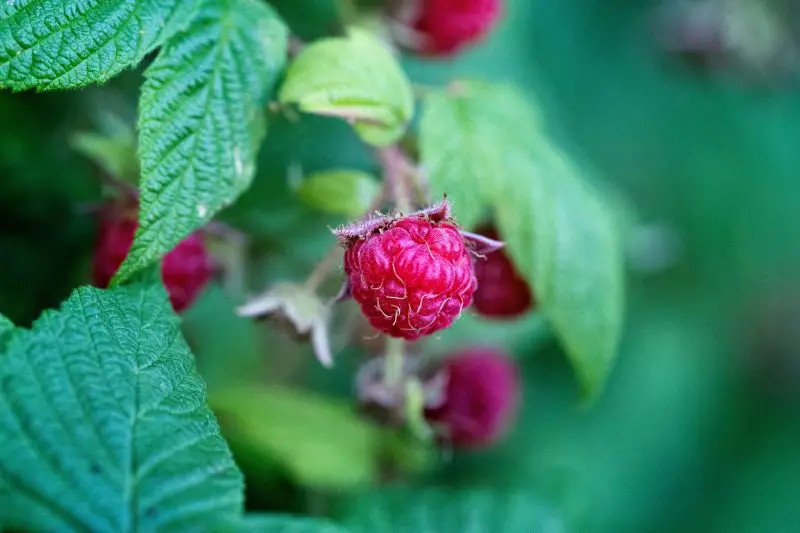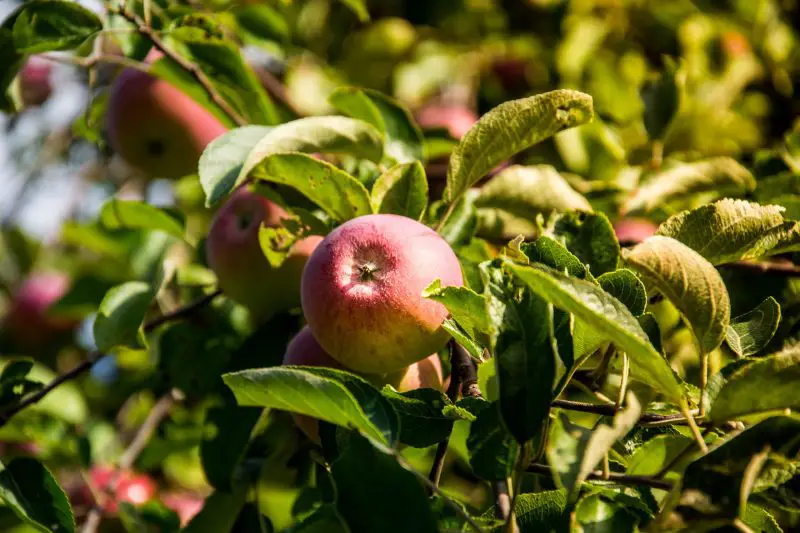Raspberries are among the easiest fruit-bearing plants to grow in Central Texas. With the right conditions and following the right advice, you will be rewarded with bountiful red berries to enjoy.
When to plant Raspberries?
Raspberry bushes are available in local nurseries twice a year and come in two different forms. Potted canes are available for sale in the fall through early winter. Bareroot bushes are usually available for springtime planting. Plant either one at the corresponding time it is available.
Planting in the fall is somewhat more suitable for central Texas. The temperatures are comfortable, making maintaining the newly planted canes easier. In addition, the mild winters provide enough time for the plant to establish its roots to face the brutal summer.
If you decide to plant in the spring, which is very short in Texas, be prepared to water religiously during the summer.
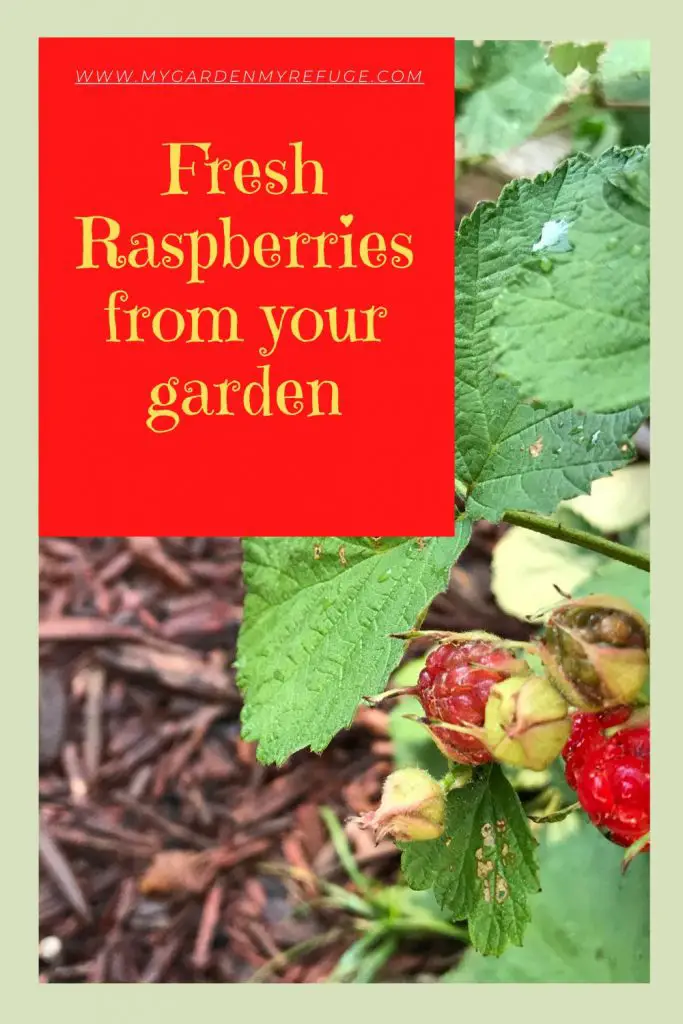
Can I grow Raspberries from seed?
Growing raspberries from seed requires a lot of patience since they need an entire season of cold temperature to germinate. Sow them in seed-starting cells and place them outdoors or in an unheated garage for the whole winter. They will break dormancy once the temperature reaches 55F (12C). Treat the seedling like you would any other seedling by keeping them in a well-lit area and well-watered.
Remember that the raspberry plant grown from seed will take about 18 months before producing.
Choosing the suitable Raspberry variety for your area
Before planting anything, always do your homework and research to find an appropriate type for your specific region. Like any other plant, raspberries come in a variety of cultivars.
Dorman Red is central Texas’s most reliable raspberry cultivar, needing minimal attention. It is a trailing plant with thorns and bears small fruit in early summer.
Some people also had good luck with the Heritage variety. It is low maintenance and, most importantly, everbearing, producing large sweet berries in summer and early fall.
How to plant a raspberry plant?
How to plant a bare-root plant?
If you got a bare root raspberry plant, you should plant it in late winter or early spring.
- Remove the root ball from the bag and shake off the excess soil.
- Place in a water-filled bucket to rehydrate the roots for a few hours.
- Dig the planting hole slightly larger than the root ball.
- Place the plant in a way the roots would flare.
- Avoid coiling any long roots. Instead, trim them shorter.
- Backfill the hole with native soil, gently pressing it down to remove air pockets.
- Firm the soil around the cane to stabilize it, then cut it back to one to two feet above the ground.
- Water thoroughly.
How to plant potted plants?
Potted trees and shrubs are available in the fall, and that’s when you should plant them. Again, follow the same steps as the bare roots except for step 2.
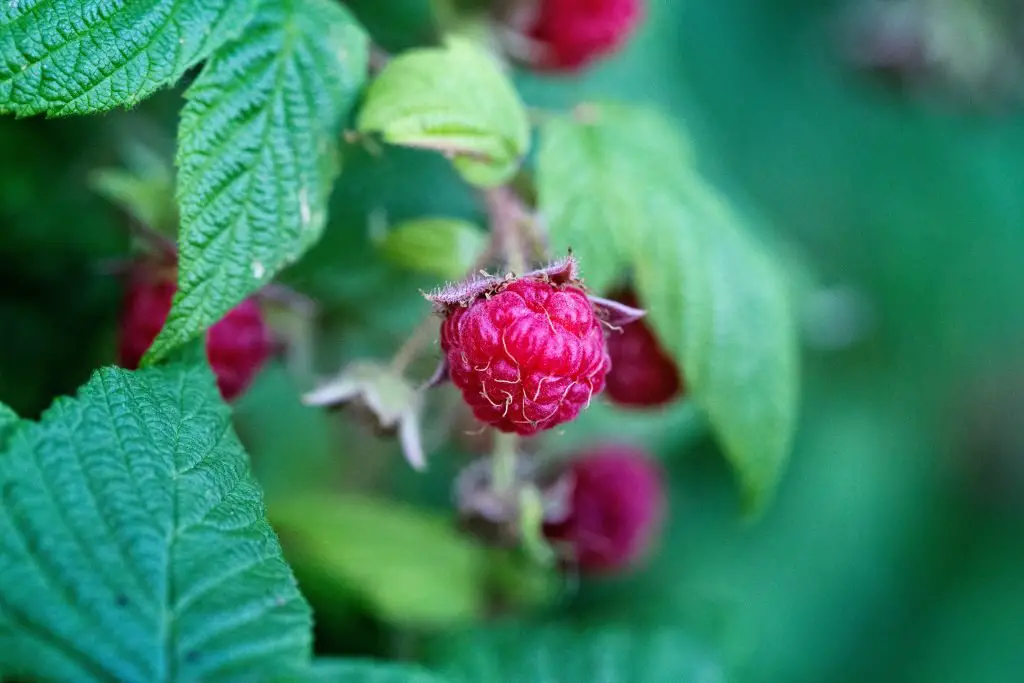
Soil requirement
Raspberries need good quality, healthy, and well-draining soil. Avoid planting them in heavy clay as it affects their growth and thus production. To improve poor soil, amend it with a lot of organic compost.
Sun exposure
Raspberries grow best in full sun, which means no less than 7 hours of direct exposure. However, in Texas, they appreciate some afternoon dappled to full shade.
Watering
Dorman Red is the adapted variety for the central Texas climate. It is considered drought and heat tolerant once established. Water your newly planted canes once a week or so for the first year. After that, your plant will take care of itself unless the area is under a severe drought.
Fertilizing
Implementing best gardening practices, such as adding compost, reduces the need for extra feeding. The reason is that healthy soil houses millions of organisms that contribute to feeding plants. However, you may want a supplement for an organic fertilizer at production time for extra insurance.
Supporting raspberry plants
Raspberries have a wild growth pattern, and their stems are not as sturdy. Therefore, support is necessary to keep the canes upright and tidy. Today there are many ready-to-assemble raspberry trellis kits, but you can also make one yourself. The picture below shows the one I made for my garden.
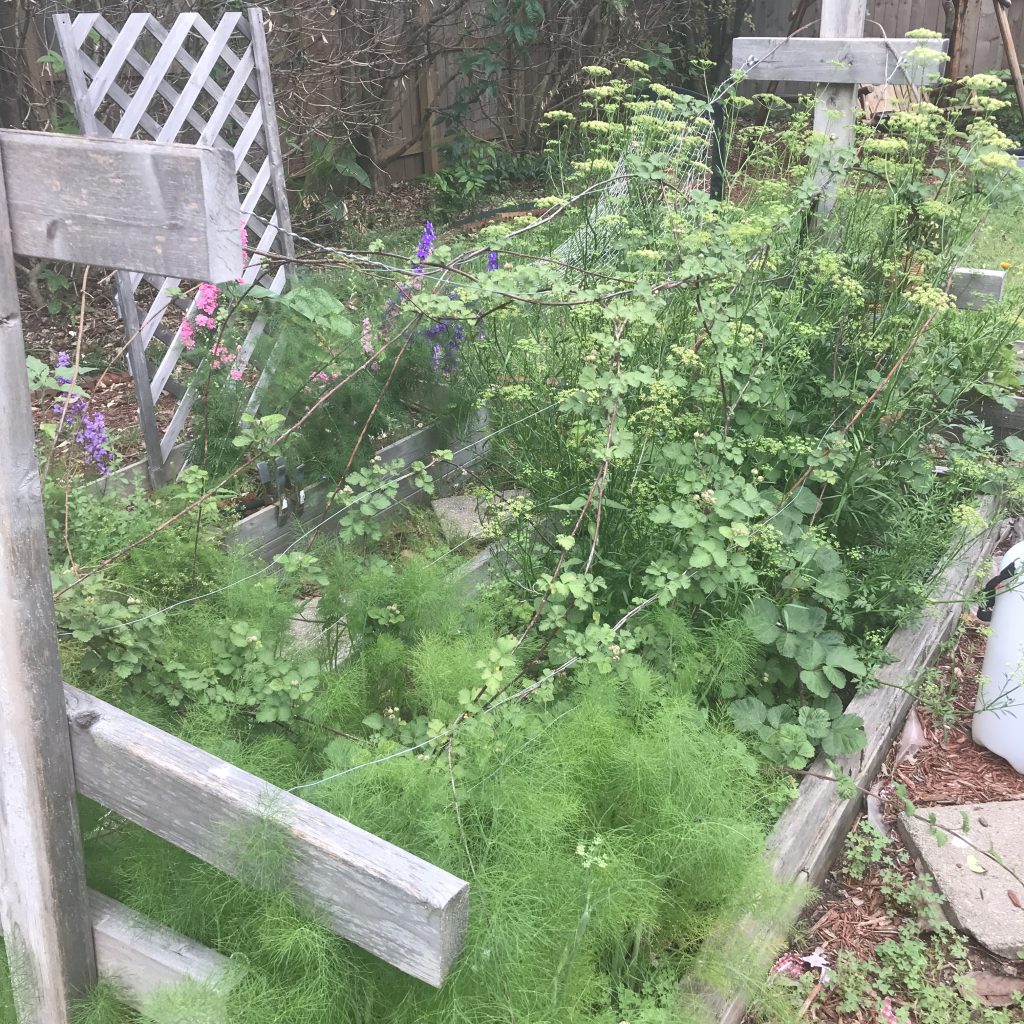
Can I grow raspberries in a raised bed?
That is one of the easiest ways to grow raspberries. Most of us have difficult soil to work with, so setting up a raised bed is a great option to avoid dealing with compact native soil. Fill the raised bed with good soil rich in organic matter and allow it to settle before planting.
Harvesting Raspberries
The self-pollinating blooms start showing up in early spring, and it takes two to three weeks for the fruit to ripen. The berry is ready to be picked when it releases easily from the stem. If you feel any resistance, you should wait a bit longer.
Pruning Raspberries
At the end of the season, and once production ends, it is essential to prune your raspberry patch. It usually takes place in the fall. First, however, you need to know that you should only cut old canes that have already produced fruits. If you cannot recall which ones are old, you can identify them by their woody and dark-colored stems compared to the new canes.
Propagation of raspberry plants
Raspberry branches root easily as soon as they touch the ground. Unfortunately, they also send new sprouts, making them invasive for some gardeners. But, you can uproot them and share them with friends.
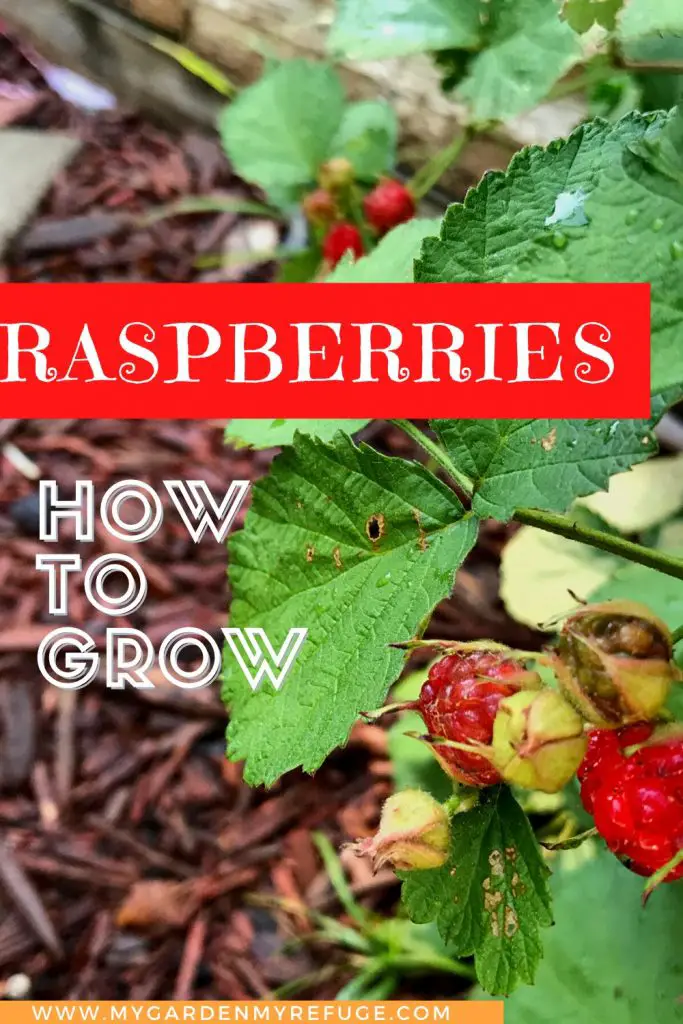
Nutritional value of raspberry plant
Raspberries are low in calories but high in fiber and Vitamin C, making them an excellent treat for dieters. According to healthine.com, they may also contain anti-aging and anti-cancer properties.
Raspberry leaves are a suitable replacement for black tea and have medicinal properties relieving menstrual cramps and diarrhea.
How to make raspberry leaf tea?
Harvest new leaves early in the season before the fruits appear. Young leaves are tastier than old ones. Wash them well, and air dry them on a rack or using a dehydrator. Store the dried leaves in a glass jar away from sunlight and humidity.
To make the tea:
- Take one ounce of dry leaves or a handful of fresh leaves.
- Pour a pint of hot water over them.
- Cover and allow to steep for 15 to 20 minutes.
- Strain and enjoy with a bit of honey.
